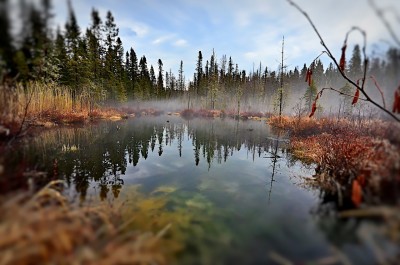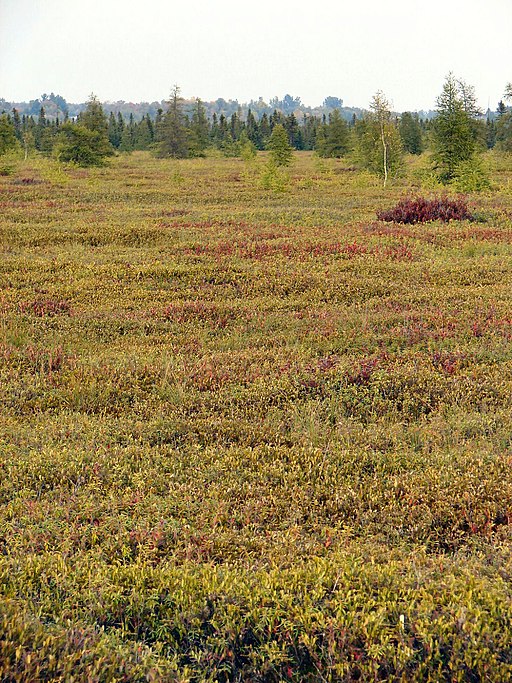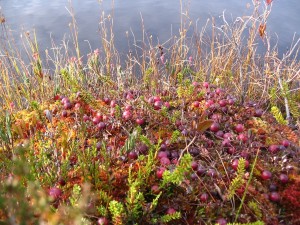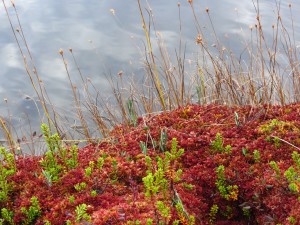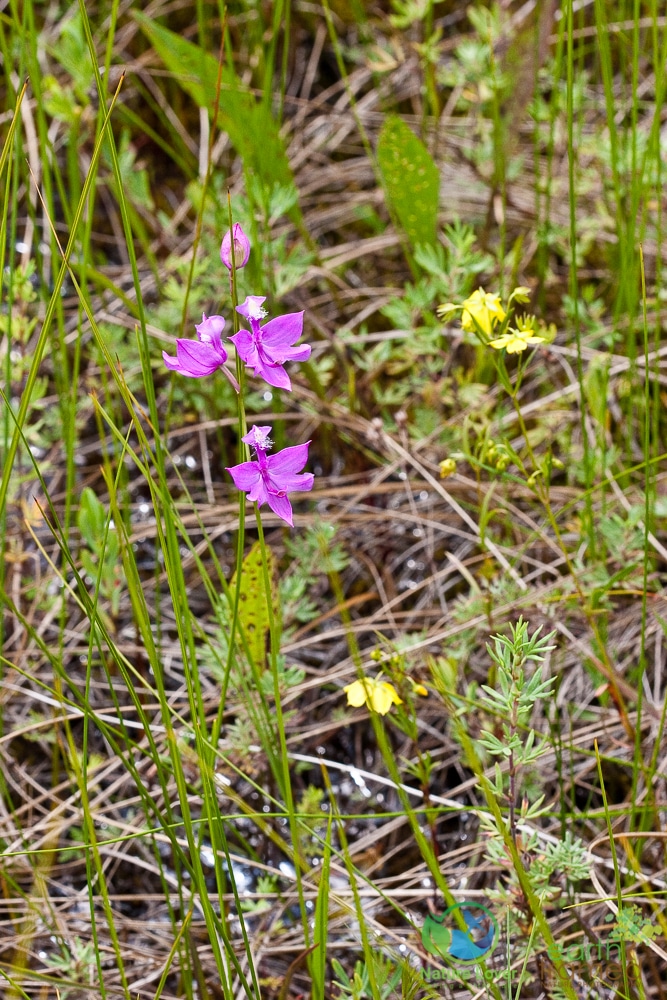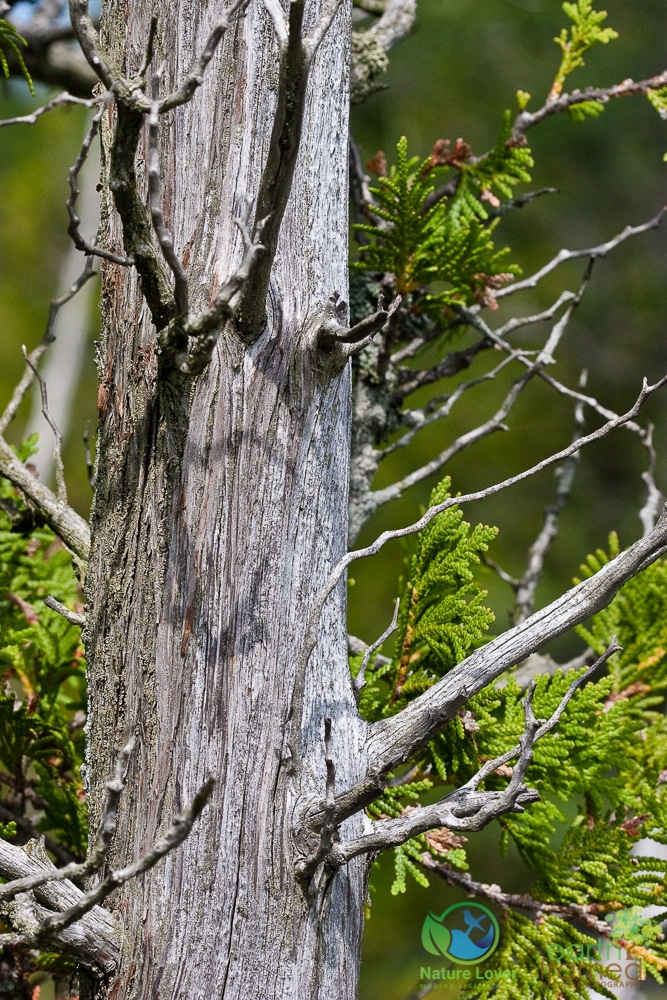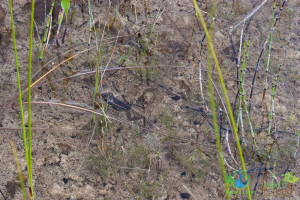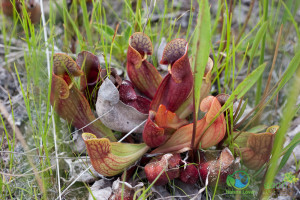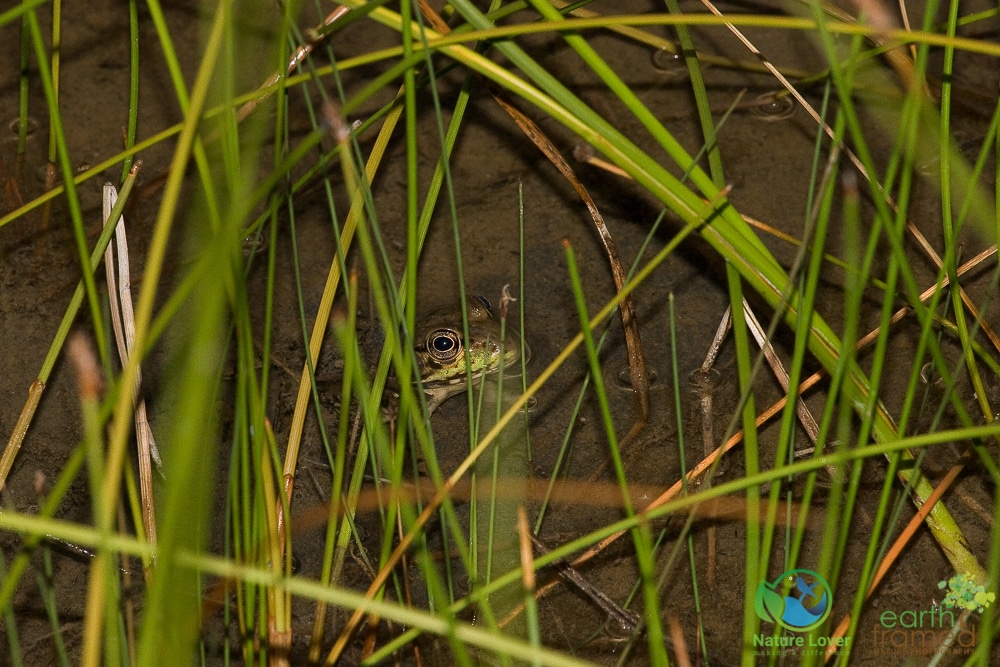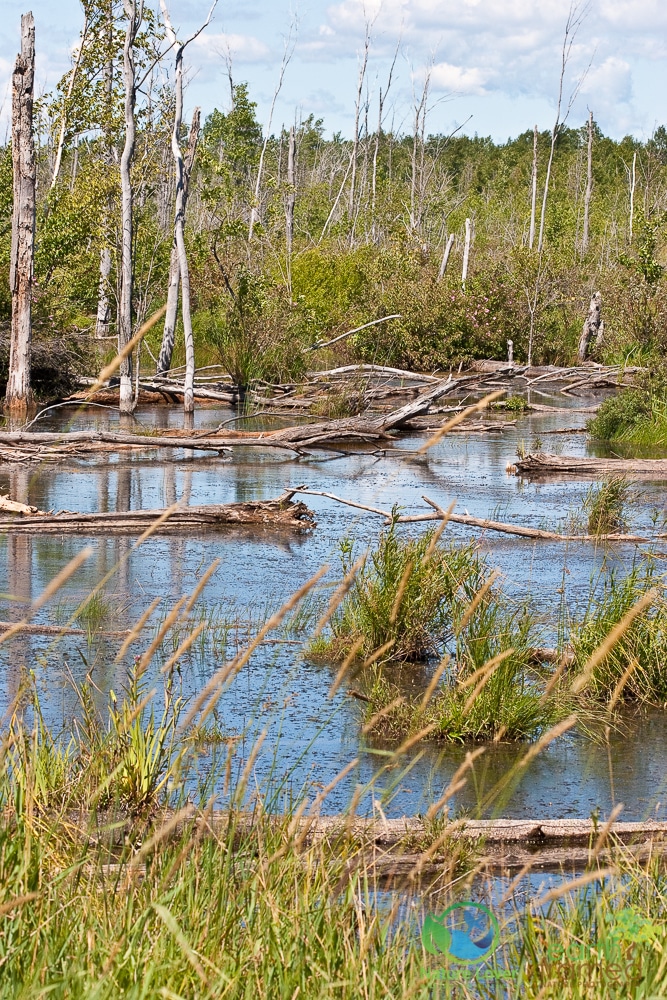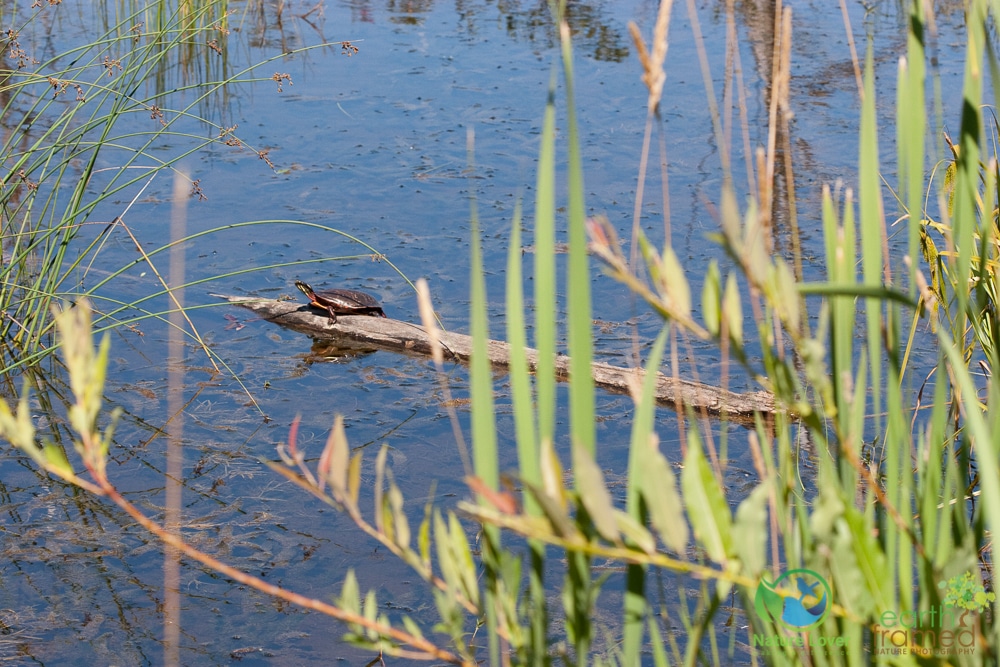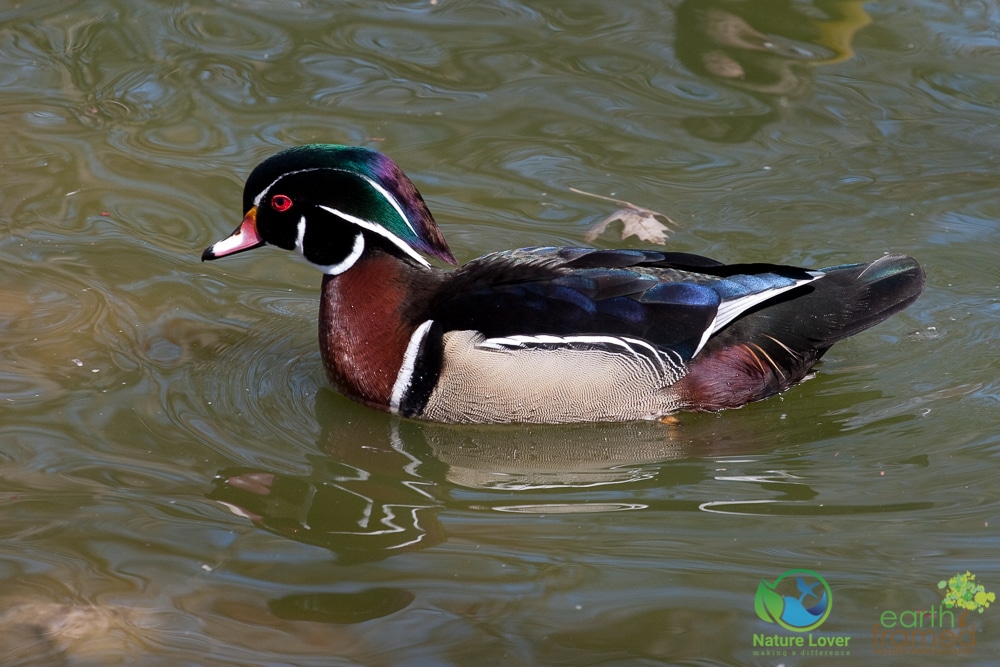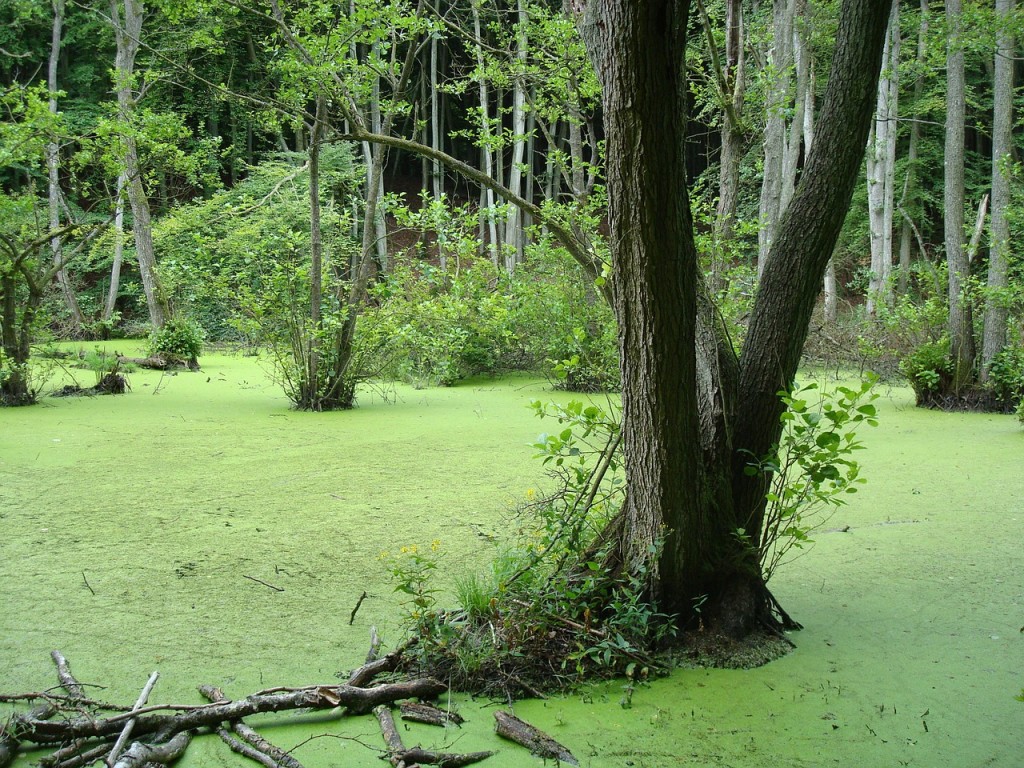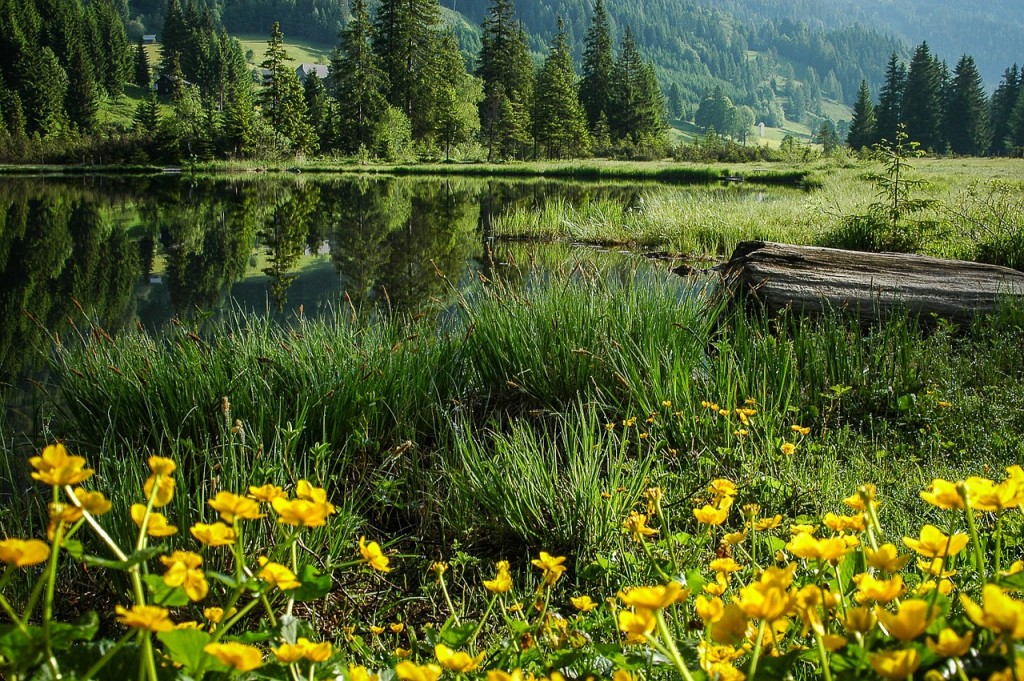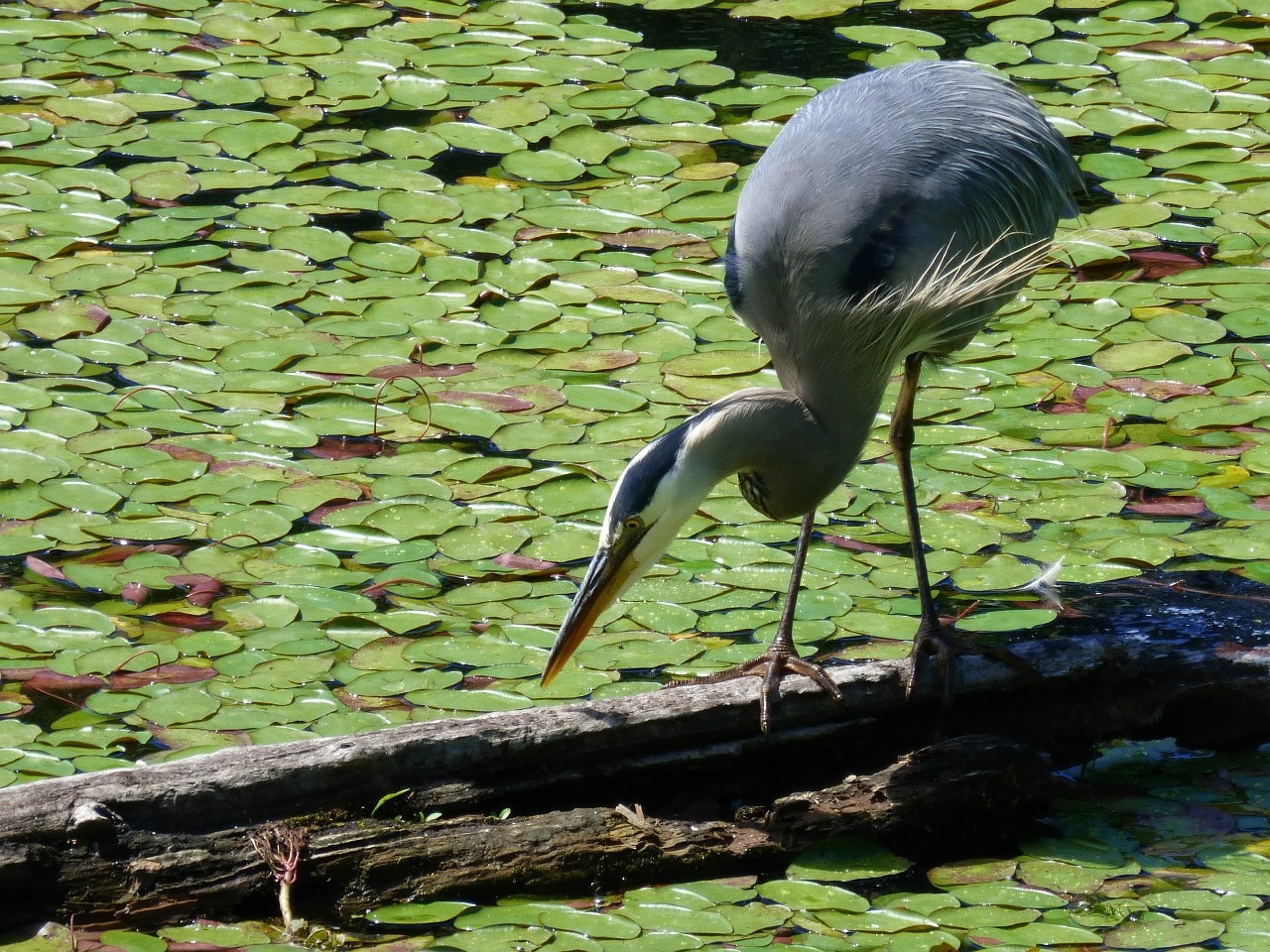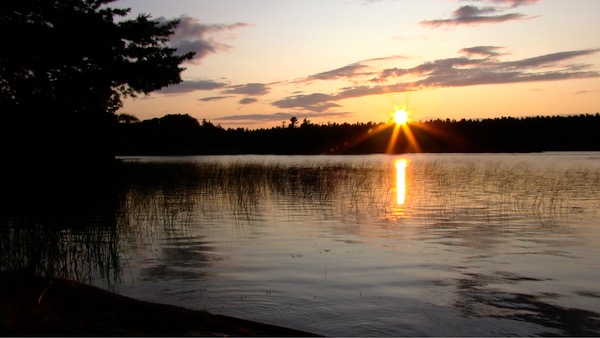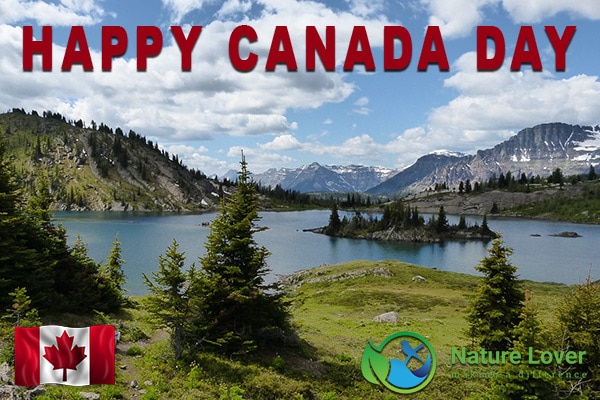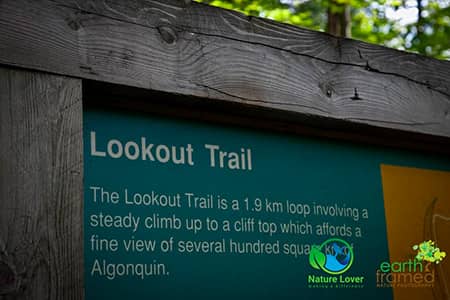What is a wetland? According to the Ramsar Convention on Wetlands; “Wetlands are areas of marsh, fen, peatland or water, whether natural or artificial, permanent or temporary, with water that is static or flowing, fresh, brackish or salt, including areas of marine water the depth of which at low tide does not exceed six metres.”
As highly productive ecosystems, wetlands provide almost 2/3rds of the world’s fish harvest. They are also home to a large number of endangered and threatened animal and plant species – about 40% of all wildlife in the world rely on wetlands. Worldwide, there are severalclassifications of wetlands that are divided into many wetland forms, for example: marshes, estuaries, mudflats, mires, ponds, fens, pocosins, swamps, deltas, coral reefs, billabongs, lagoons, shallow seas, bogs, lakes, mangroves, and floodplains.
In Canada there are five main wetland classes:
Known as an organic wetland, bogs are characterized by wet, spongy, poorly drained peaty soils which are home to bog mosses, Sphagnum and heaths. Some wildflowers are found in bogs, especially orchids. These wetlands are usually acidic and are often surrounded by a body of open water. Rainfall is their only source of water resulting in stagnant, unproductive environments. Bogs appear to have solid ground in areas that are actually floating vegetation, which can make them quite dangerous. Stunted tamarack and black spruce trees often dot bogs. Songbirds may take cover in the bog’s trees, and moose are often found feeding at the edges of these wetlands. Very few amphibians can survive the highly acidic conditions of a bog.
In northern Canada, and the northern hemisphere, bogs are the most common type of wetland. 35% of the world’s peat accumulating wetlands (known as peatlands) are found in Canada.
Fens, like bogs, are a type of organic peatland and support grasslike plants, grasses, sedges and reeds. These alkaline areas receive their water from surface and groundwater sources. One of the main differences between a bog and a fen is the flora. Fens do not have Sphagnum moss and support more marsh-like vegetation because they have higher nutrient levels and therefore a greater diversity of plant species.
Fens are found throughout Canada but are most common in arctic and subarctic regions.
Unlike bogs and fens, the last three wetland classes are known as mineral wetlands. Marshes are usually flooded wetlands covered in green vegetation that have adapted to the saturated soil conditions, changing water levels, and mineral soils: tall reeds, rushes, grasses, sedges, pond lilies, etc. These wetlands do not usually have a lot of open water, since they are covered in plant growth.
In Canada, marshes are divided into freshwater and saltwater types. The freshwater marshes are found inland and are mainly made up of the prairie potholes and the Great Lakes marshes. These marshes are home to many wildlife species including beavers, newts, shrimp, muskrat, mink, turtles, frogs, fish, ducks, and waterfowl.
Saltwater marshes are found along the Atlantic, Pacific and Arctic coastlines, as well as the shores of the Hudson and James Bay. Salt-tolerant grasses and rushes are the main plant life in saltwater marshes and are home to fish, waterfowl and a variety of invertebrates.
Marshes are the most common wetland found in North America.
Often confused with marshes, swamps are distinguished by the presence of trees and shrubs. Swamps are saturated areas that are flooded for most of the growing season and are usually associated with streams, rivers or lakes which flow through the wetland. Some swamps have actually developed from marshes that have slowly filled in allowing trees and woody shrubs to grow. Dense coniferous or deciduous forests (or tall shrubs) primarily grow here, but the specific trees will depend on the climate. In the Northern boreal region, swamps are dominated by white and black spruce, but in southern Ontario, you will find primarily silver maple trees. Ferns, blueberries, touch-me-nots, orchids and skunk cabbage are also often found in swamps. Deer use swamps for natural cover and you will find wood frogs, salamanders and wood and black ducks living here as well.
In Canada, swamps are found mainly on Vancouver Island, the southern Pacific Coast and the Great Lakes region.
This class is defined as a small, shallow, open body of water of either standing or gently flowing water that creates a transitional area between lakes and marshes. Ponds, pools, oxbows, deltas and channels are all examples of this type of wetland. The surface of the water has no vegetation except for floating vegetation; milfoils, water hyacinth, duck weed, and water lilies. Beavers and moose can often be found near these wetlands and amphibians, reptiles, crustaceans, other mammals and fish all thrive in this ecosystem. Shallow open waters can develop into swamps or marshes.
Open Shallow Water
Sources:
“Basic Facts About Wetlands.” Defenders of Wildlife. N.p., 24 Apr. 2012. Web. 13 May 2015. <http://www.defenders.org/wetlands/basic-facts>.
“Discover Canada’s Wetlands.” Discover Canada’s Wetlands – Chapter 2: Classification of Wetlands. University of Guelph, n.d. Web. 21 May 2015. <http://www.aquatic.uoguelph.ca/wetlands/chclass.htm>.
National Wetlands Working Group (NWWG). 1988. Wetlands of Canada. Environment Canada and PolyScience Publications. 452 p.
“NCC – Land Lines: 12 Tweetable Facts for World Wetlands Day 2015.” NCC – Land Lines: 12 Tweetable Facts for World Wetlands Day 2015. Nature Conservancy Canada, n.d. Web. 21 May 2015. <http://www.natureconservancy.ca/en/blog/tweetable-facts-on-WWD.html>.
“Types of Wetlands.” WWF –. N.p., n.d. Web. 13 May 2015. <http://wwf.panda.org/about_our_earth/about_freshwater/intro/types/>.
“Wetlands Types and Classifications.” Wetlands Types and Classifications. N.p., n.d. Web. 13 May 2015. <http://www.personal.ceu.hu/students/03/nature_conservation/wwddetail/Types_classif.html>.


